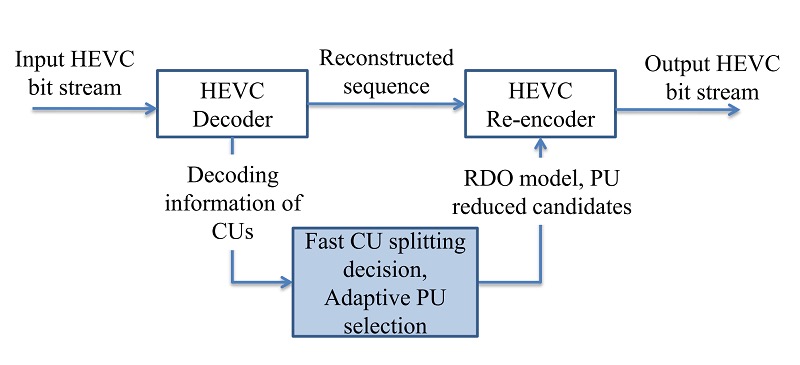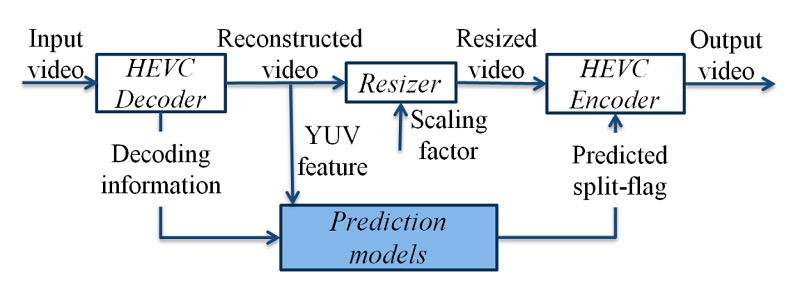Our paper, “Efficient bit rate transcoding for high efficiency video coding”, has been accepted for publication in the IEEE Transactions on Multimedia.

High efficiency video coding (HEVC) shows a significant advance in compression efficiency and is considered to be the successor of H.264/AVC. To incorporate the HEVC standard into real-life network applications and a diversity of other applications, efficient bit rate adaptation (transrating) algorithms are required. A current problem of transrating for HEVC is the high computational complexity associated with the encoder part of such a cascaded pixel domain transcoder. This paper focuses on deriving an optimal strategy for reducing the transcoding complexity with a complexity-scalable scheme. We propose different transcoding techniques which are able to reduce the transcoding complexity in both CU and PU optimization levels. At the CU level, CUs can be evaluated in top-to-bottom or bottom-to-top flows, in which the coding information of the input video stream is utilized to reduce the number of evaluations or to early terminate certain evaluations. At the PU level, the PU candidates are adaptively selected based on the probability of PU sizes and the co-located input PU partitioning. Moreover, with the use of different proposed methods, a complexity-scalable transrating scheme can be achieved. Furthermore, the transcoding complexity can be effectively controlled by the machine learning based approach. Simulations show that the proposed techniques provide a superior transcoding performance compared to the state-of-the-art related works. Additionally, the proposed methods can achieve a range of trade-offs between transrating complexity and coding performance. From the proposed schemes, the fastest approach is able to reduce the complexity by 82% while keeping the bitrate loss below 3%.








